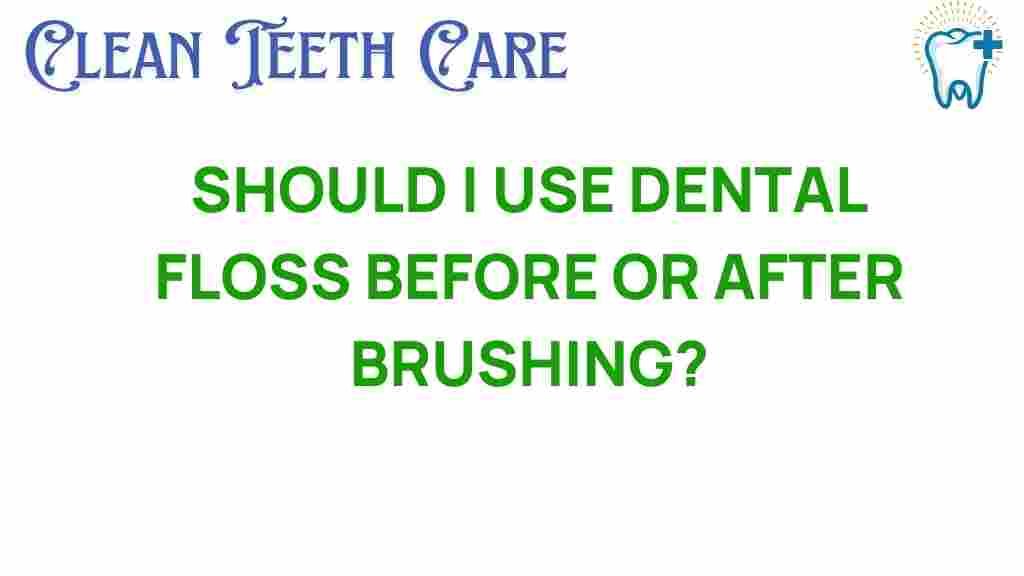The Great Debate: Should You Floss Before or After Brushing?
When it comes to maintaining oral hygiene, the age-old question persists: should you floss before or after brushing your teeth? This debate has sparked discussions among dental professionals, patients, and health enthusiasts alike. With a focus on dental care, healthy gums, and overall dental health, we delve into this topic to provide clarity and guidance.
The Importance of Flossing and Brushing
Both dental floss and brushing play vital roles in ensuring optimal oral health. Together, they work effectively to remove plaque, prevent cavities, and maintain healthy gums. Here are some key reasons to incorporate both into your daily routine:
- Plague Removal: Brushing teeth removes plaque from the surfaces, while flossing cleans between the teeth and under the gumline.
- Healthy Gums: Regular flossing helps to prevent gum disease, an issue that affects many adults.
- Comprehensive Cleaning: Using both methods allows for a more thorough cleaning of your mouth.
- Fresh Breath: Effective plaque removal contributes to fresher breath.
What Do Dentists Recommend?
When seeking dentist advice, many professionals suggest using both floss and a toothbrush as part of a complete oral hygiene routine. However, the order in which you use them can vary based on personal preference and technique.
Some dentists advocate flossing first, while others recommend brushing first. To better understand the rationale behind each approach, let’s explore the benefits of both.
Flossing Before Brushing
Flossing before brushing is a common technique that has several advantages:
- Prepping the Teeth: Flossing first helps to dislodge food particles and plaque from between the teeth, making it easier for the toothbrush to clean the surfaces effectively.
- Fluoride Distribution: After flossing, when you brush, the fluoride from your toothpaste can reach areas that were previously missed, enhancing protection against cavities.
- Better Awareness: Flossing before brushing allows you to identify areas that need extra attention while brushing.
Brushing Before Flossing
On the other hand, some individuals prefer to brush their teeth first. Here are some reasons why this method might work for you:
- Cleaner Surface: By brushing first, you can clean the surfaces of your teeth, making it easier to floss without the interference of larger food particles.
- Motivation to Floss: Some people find they are more likely to floss if they feel their teeth are clean after brushing.
- Routine Preference: For many, brushing first feels more natural and is a common practice.
Step-by-Step Process for Effective Oral Hygiene
No matter which method you choose, it’s essential to follow a proper flossing technique and brushing method to maximize your dental health. Here’s a step-by-step guide:
1. Gather Your Supplies
You will need:
- Dental floss or a floss pick
- Fluoride toothpaste
- Toothbrush (manual or electric)
- Mouthwash (optional)
2. Flossing Technique
If you choose to floss first, follow these steps:
- Take about 18 inches of dental floss and wrap it around your middle fingers, leaving about 1-2 inches of floss to work with.
- Hold the floss taut between your thumbs and index fingers.
- Gently slide the floss between your teeth, curving it around each tooth in a C-shape.
- Move the floss up and down against the sides of each tooth.
- Repeat this process for all teeth, using a clean section of floss for each tooth.
3. Brushing Teeth
After flossing, it’s time to brush your teeth:
- Apply a pea-sized amount of fluoride toothpaste to your toothbrush.
- Angle your toothbrush at 45 degrees towards the gum line.
- Use gentle circular motions to brush the outer and inner surfaces of your teeth.
- Brush the chewing surfaces and your tongue to remove bacteria and freshen your breath.
- Brush for at least two minutes, ensuring you cover all areas.
4. Rinse and Final Touches
After brushing, rinse your mouth thoroughly. You may also choose to use a mouthwash for an extra layer of freshness and protection. This step can enhance your overall oral hygiene routine.
Troubleshooting Common Flossing Issues
While flossing is essential for dental care, some people face challenges. Here are common issues and solutions:
1. Floss Breaks or Shreds
If your floss frequently breaks, consider the following:
- Use a waxed dental floss, which is less likely to shred.
- Check for sharp edges on your teeth or dental work that might be causing the issue.
- Consult your dentist if the problem persists.
2. Gums Bleeding
Bleeding gums can occur, especially if you are new to flossing:
- Floss gently and avoid snapping the floss between your teeth.
- If bleeding continues for more than a week, consult your dentist as it may indicate gum disease.
3. Difficulty Reaching Certain Areas
Some people struggle to floss their back teeth:
- Try using a floss holder or interdental brushes for easier access.
- Consider using a water flosser as an alternative to traditional floss.
Conclusion
Ultimately, the debate on whether to floss before or after brushing comes down to personal preference and what works best for you. The most important aspect of maintaining dental health is consistency. Regularly using dental floss and brushing your teeth effectively will help keep plaque at bay and promote healthy gums.
Remember, the key to successful oral hygiene lies in your technique and commitment to daily care. For more information on effective oral hygiene practices, check out this helpful resource from the American Dental Association.
Whether you choose to floss before or after brushing, make sure to stick to your routine and consult your dentist for personalized advice. Your smile will thank you!
This article is in the category Hygiene and created by CleanTeethCare Team
